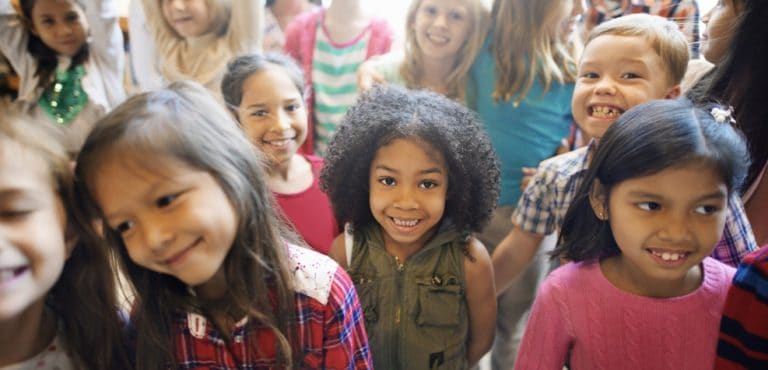Do you know whether you’re a visual, auditory, reading/writing, or kinaesthetic learner? What about your students? If you’ve been in the educational field long enough, you’ve probably come across Fleming’s learning styles theory. For over forty years, researchers have sought to classify how different students learn and what teachers can do to support them.
While many teachers feel that taking a student’s learning style into account can help them succeed, others feel that this theory is about as scientific as a horoscope.[2] Whether the evidence points for or against learning styles, however, this theory can remind us that some students may need individualized instruction or resources to best help them learn.
In this article, we’ll provide an overview of learning styles and a fair presentation of the research for and against the theory. Then, we’ll discuss how to best incorporate what the learning styles theory teaches about individualized learning in the classroom.
What Are the Four Learning Styles?
In talking about the learning styles theory, we’re defining it here as the educational model proposed by Neil Fleming in 1984 that presents four types of learning styles.[18] While educators have researched different models and provided various examples of learning styles since the 1970s, Fleming’s model is one that gained a lot of traction among teachers.
Also known as the VARK model, this theory presents four distinct ways that students might best process information:[16]
- Visual: information presented through images, like graphs or illustrations
- Auditory: information presented through sounds, like audiobooks or songs
- Reading/writing: information presented through written words, like books or articles
- Kinaesthetic: information presented through experience or touch, like models or simulations
According to the learning styles theory, every student has certain learning styles that work better for them than others. An auditory learner, for example, may focus better while listening to an audiobook than they would while reading a book. These preferences don’t indicate abilities but only differences in processing information.[8]
How would you discover a student’s learning style? Measuring learning styles often involves an assessment such as this one from the Georgia Department of Education. Based on a student’s answers to the questionnaire, teachers can choose to provide them with resources or supplementary information that corresponds to their learning style.
Is There Evidence to Support Different Types of Learning Styles?

Researchers, however, have sought to measure how effective the theory is and uncovered some positive evidence. One study conducted in Taiwan, for example, came to the conclusion that educating students on learning styles can encourage self-reflection—always a positive thing.[9] In another study, a professor at Auburn University found that using learning styles to teach concepts to individual students can improve information recall.[15] This suggests that educating students about learning styles and using them in class may help students pay attention and reflect on their academic needs.
Learning styles can also be a gateway for teachers to implement personalized learning in class.[14] A study conducted in 2013 found that personalized learning can improve motivation as well as academic achievement.[13] Regardless of whether the learning styles theory accurately reflects how people learn, personalization is a great way to support students with unique needs in the classroom.
Have Learning Styles Been Debunked? The Growing Research Against the Theory
While there’s plenty of support for this theory among teachers who find it helpful, research surrounding learning styles is sparse and sometimes critical. It’s true that many students have a preference for one of the four learning styles. As of yet, however, no link has been found between a preferred learning style and academic achievement.[5]
This means that while students may have personal preferences, they don’t actually learn better using one style over another.[1] Because the theories have been around for decades and still fail to produce a measurable effect, an increasing number of educators question the extent to which they should deliberately use them in class.[7]
Rather than an educational theory, some researchers view learning styles as more of a personality test.[2] It can be useful to know which learning medium your students like the most to help them engage more with your lessons. But if you’re looking for a theory that models how the brain actually works, learning styles may not be it.

Ultimately, the choice to use learning styles in class is up to individual teachers. Some may find it a helpful reminder to provide individualized resources, while others may see learning styles as a myth that doesn’t actually help their students. Either way, the debate a great reminder for teachers to research and test an educational theory for themselves before accepting it as fact.[12]
So, What Can We Conclusively Take Away from the Learning Styles Theory?
As you can see, the educational field is split between proponents and critics of the learning styles theory. While it’s often helpful to use different ways of learning in class, the research doesn’t conclusively suggest the theory to be an accurate model of how our brains work. Like the multiple intelligences theory, learning styles can be a practical tool but not a fully-backed theory.
It may also be possible that different learning styles exist and researchers haven’t yet pinpointed what they are.[17] For the most part, the VARK model of learning styles appears to be a personal preference. But in future studies, researchers may discover a new model that accurately represents different ways students learn in class.
Where does this leave learning styles in terms of practical use? The one thing all educators can agree on is that every student has unique needs that may change your teaching approach for that student.[1] A child with dyslexia, for example, would have different needs from a child that simply has trouble learning to read. Some strategies or resources might help certain students more than they do others. Instead of planning activities based on learning styles, teachers may want to opt for a different, but better researched technique: differentiated instruction.
How to Shift from Learning Styles to Differentiated Instruction
What is differentiated instruction and how does it differ from learning styles? Differentiated instruction is when educators provide individualized lesson plans, accommodations, or other resources to students based on their needs. Rather than theming support around a certain learning style, teachers get to know their students to determine what needs they have and how to fill them.
Perhaps because differentiated instruction is more tailored to individuals than to categories of learning styles, its effects are more measurable in the classroom—particularly for students with disabilities.[19] If learning styles piqued your interest in personalized learning, differentiated instruction can provide a more effective framework.
Instead of providing the four-pronged cookie-cutter approach that learning styles suggest, teachers focus on individual students and observe what helps them learn.[5] As they get to know their students and discuss their unique needs with parents, teachers can use differentiated instruction strategies to support academic growth.
In conclusion: generally, the learning styles theory has the right idea.[6] Students learn best when teachers provide resources that meet their personal needs. But rather than categorizing students as a “kinaesthetic” or “visual” learner, they might be better served if teachers work to provide individualized support for different assignments.[4]
Sources:
- Riener, C. & Willingham, D. The Myth of Learning Styles. Change: The Magazine of Higher Learning, 2010, 42(5), pp. 32-35.
- Romanelli, F., Bird, E., and Ryan, M. Learning Styles: A Review of Theory, Application, and Best Practices. American Journal of Pharmaceutical Education, 2009, 73(1).
- Curry, L. A Critique of the Research on Learning Styles. Educational Leadership, October 1990, 48(2), pp. 50-56.
- Reynolds, M. Learning Styles: A Critique. Management Learning, June 1997, 28(2), pp. 115-133.
- An, D., and Carr, M. Learning styles theory fails to explain learning and achievement: Recommendations for alternative approaches. Personality and Individual Differences, October 2017, 116(1), pp. 410-416.
- Smith, J. Learning Styles: Fashion Fad or Lever for Change? The Application of Learning Style Theory to Inclusive Curriculum Delivery. Innovations in Education and Teaching International, 2002, 39(1), pp. 63-70.
- Scott, C. The Enduring Appeal of ‘Learning Styles.” Australian Journal of Education, April 2010, 54(1), pp. 5-17.
- Willingham, D.T., Hughes, E.M., and Dobolyi, D.G. The Scientific Status of Learning Styles Theories. Teaching of Psychology, June 2015, 42(3), pp. 266-271.
- Hsieh, S., Jang, Y., Hwang, G., and Chen, N. Effects of teaching and learning styles on students’ reflection levels for ubiquitous learning. Computers & Education, August 2011, 57(1), pp. 1194-1201.
- Hilgersom-Volk, K. Celebrating Students’ Diversity through Learning Styles. OOSC Bulletin, May 1987, 30(9), pp. 1-32.
- Kirschner, P.A. Stop propagating the learning styles myth. Computers & Education, March 2017, 106, pp. 166-171.
- Dembo, M., and Howard, K. Advice about the Use of Learning Styles: A Major Myth in Education. Journal of College Reading and Learning, 2007, 37(2), pp. 101-109.
- Hwang, G., Sung, H., Hung, C., Huang, I., and Tsai, C. Development of a personalized educational computer game based on students’ learning styles. Educational Technology Research and Development, August 2012, 60(4), pp. 623-638.
- Horton, C.B., and Oakland, T. Temperament-based learning styles as moderators of academic achievement. Adolescence, 1997, 32(125), 131-141.
- Davis, S.E. Learning Styles and Memory. Institute for Learning Styles Journal, 2007, 1, pp. 46-51.
- Wilfrid Laurier University. Understanding Your Learning Style. Retrieved from wlu.ca: https://web.wlu.ca/learning_resources/pdfs/Learning_Styles.pdf.
- Pashler, H., McDaniel, M., Rohrer, D., and Bjork, R. Learning Styles: Concepts and Evidence. Psychological Science in the Public Interest, 2009, 9(3), pp. 105-119.
- Leite, W.L., Svinicki, M., and Shi, Y. Attempted Validation of the Scores of the VARK: Learning Styles Inventory With Multitrait–Multimethod Confirmatory Factor Analysis Models. Educational and Psychological Measurement, 2010, 70(2), pp. 323-339.
- Darrow, A. Differentiated Instruction for Students With Disabilities: Using DI in the Music Classroom. General Music Today, 2015, 28(2), pp.29-32.

